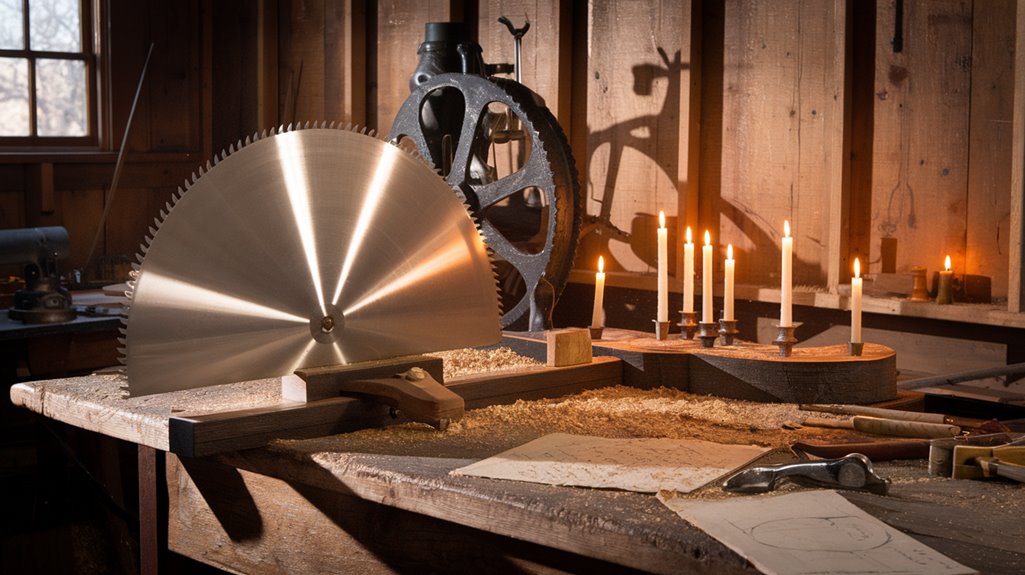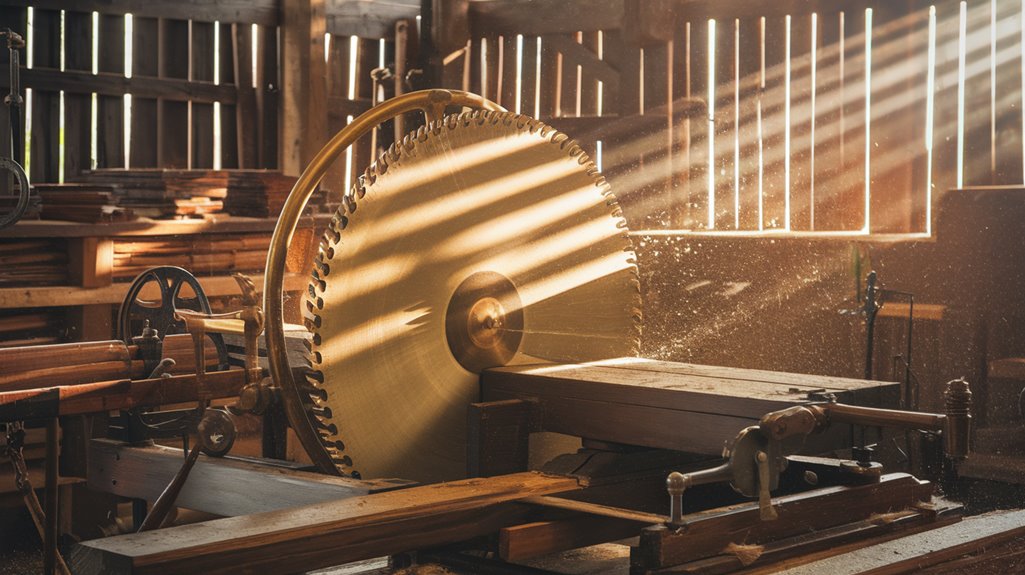Tabitha Babbitt’s Circular Saw: The Tool That Shook Up Sawmills Overnight
You've probably used a circular saw before, but you might not know that this game-changing tool emerged from a Shaker woman's simple observation of wasted energy. When Tabitha Babbitt watched two men struggle with a pit saw in 1813, she didn't just see their back-and-forth motion—she witnessed half their effort being lost on the return stroke. Her connection between this inefficiency and her spinning wheel's continuous motion would transform the lumber industry forever, though the full story of how this humble weaver revolutionized industrial woodworking holds some unexpected turns.
The Lightbulb Moment

Gazing at two men struggling with a whipsaw, Tabitha Babbitt noticed a critical flaw in their work: half their motion was wasted.
While the forward motion cut through wood, the backward pull achieved nothing but repositioning. This inefficiency sparked her lightbulb inspiration for a revolutionary solution.
Born and raised in Hardwick, Massachusetts, she developed her innovative mindset early on.
As a devoted Shaker community member, she was unable to patent her groundbreaking invention.
You might wonder where she found her answer – in the simple spinning wheel she used daily.
As she watched its continuous circular motion, Babbitt envisioned a round blade that could cut without wasting movement.
Her pursuit of cutting efficiency led her to attach a circular blade to a spinning wheel, powered by a foot treadle.
She later enhanced the design by connecting it to water power, effectively doubling productivity while halving the required manpower.
Legacy Beyond The Patent
Although Tabitha Babbitt never patented her circular saw invention due to her Shaker beliefs, its impact rippled throughout America's industrial landscape.
You'll find Babbitt's impact most evident in sawmills, where her larger, water-powered design revolutionized lumber cutting, making it notably faster and more efficient than traditional pit saws. She eliminated the need for two-person operation in sawing tasks.
Her innovative spirit extended beyond sawmills, as she also created improved spinning wheels for the Shaker community.
While controversy exists over the circular saw's true origins, with some crediting French inventors or other Shaker community members, there's no denying that Babbitt's innovation transformed the construction and manufacturing industries.
Her story exemplifies women's innovation in STEM fields, inspiring future generations of female inventors and engineers.
Today, you'll see the evolution of her concept in modern circular saws, from stationary machines to portable electric tools, continuing to shape workshops and construction sites worldwide.










